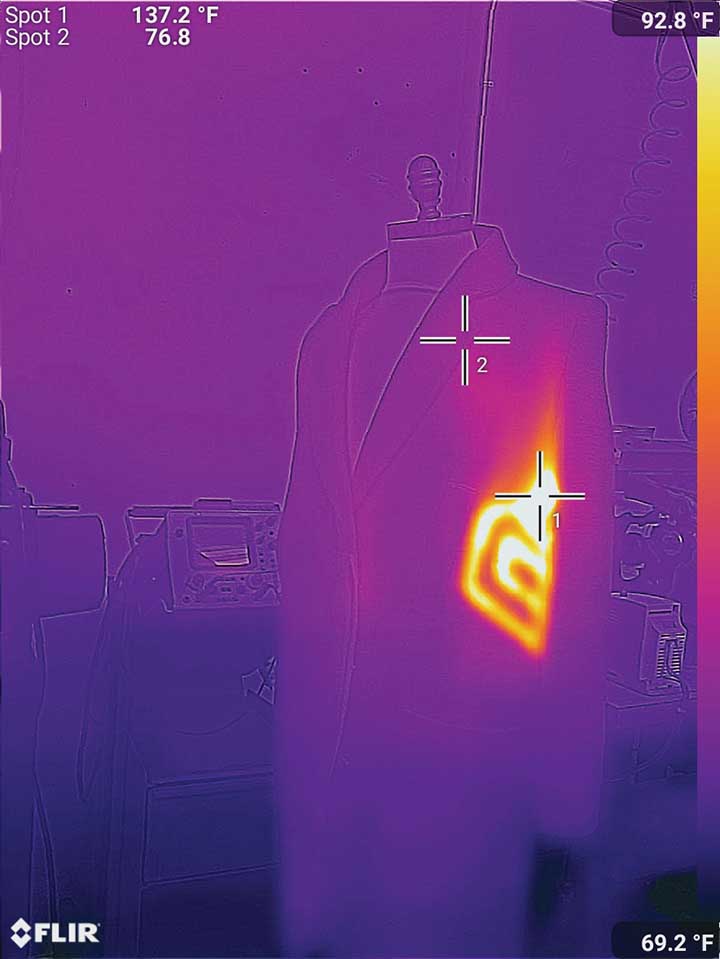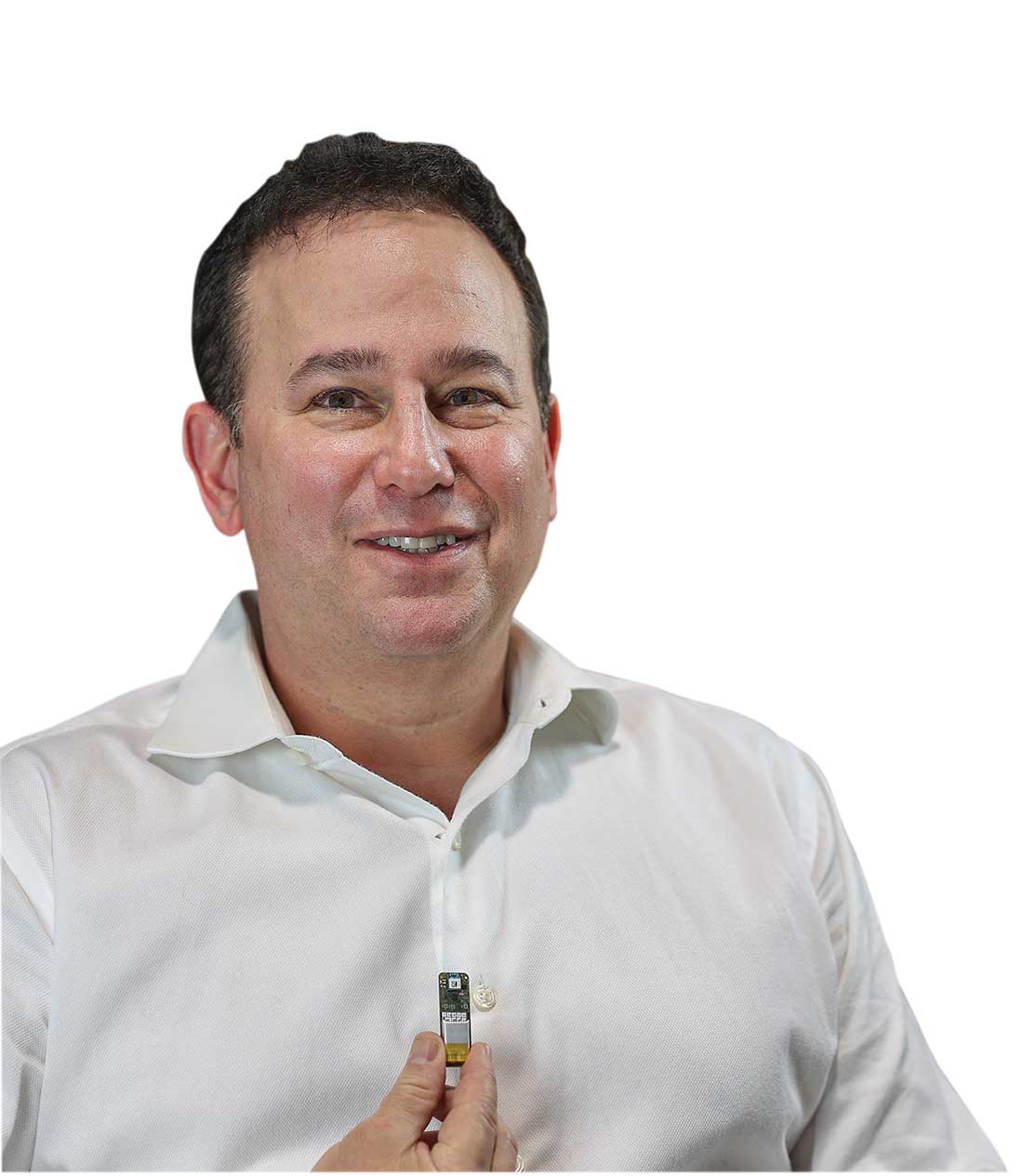Matt Kolmes, CEO of VOLT Wearable Tech (“VOLTech”), a division of VOLT Smart Yarns, recently connected with the International Fiber Journal to discuss the company’s innovative “bio-sensing” shirt that paves the way for an in-depth, real-time understanding of a body’s vital signs.
IFJ: Define the project mission and vision: Who was this looking to help and what problem was it trying to solve?
Matt Kolmes: The military currently uses a variety of technologies to measure body vital signs. While we have no affiliation with either company, the most used sensors that we encounter are the Whoop band, and the Oura ring. Both are employed as solutions to keep track of service men and women to detect heart rate (ECG), heart rate variability (HRV), strain, rest and recovery, and sleep data. These are critical to ensure the health and well-being of military personnel and trainees, and to prevent injuries and problems related to over exertion, such as heat stroke and hypothermia.
VOLTech’s mission is to design a robust and highly capable “bio-sensing” shirt that can be used by military forces for both physical training, and in real-time use to monitor body vital signs and geo location and employ AI algorithms to detect changes in those vital signs that will lead to a critical negative health event – for example, a heart attack or stroke.
IFJ: What was a general overview of the process to evaluate and execute the most effective solutions to solve the problem?
Matt Kolmes: The process was difficult and time consuming and spanned several years of development. We started with two different techniques to measure body vital signs. The first technology was developed by NASA Langley Research Center (LaRC) and is called SansEC. This uses conductive yarns sewn into geometric shapes that are placed on fabric, clothing, or directly on the body. Then, by using a Vector Network Analyzer (VNA) and NASA’s SansEC technology, we introduce a radio frequency to the geometrically shaped conductive sewing thread sensor and then we interpret the data on the VNA. The learning curve for this type of technology was steep to say the least. It involved performing experiments over and over where we created SansEC yarn sensors on fabrics and then measured the results of different interactions with various forces. For example, we introduced water, heat, touch, movement, etc., to these yarn sensors and sensors on fabrics and observed the data on the network analyzer.

Immediately it became apparent that we would need a way of compiling the results to form a data set, or a database of the measurements. By year two of our SansEC studies, we had learned to interpret the “nolls” of the network analyzer. Fortunately for us, all the research on measuring body vital signs was already done by Professor Theresa Waterbury at Smart Bio Health in Minnesota. The Smart Bio Health group studied SansEC sensors, which measure body vital signs, and compared these to known devices like the Omron® Blood Pressure Monitor. What emerged from this research was that there was a large amount of data on capturing human body vital signs with SansEC. The Smart Bio Health team not only made their research available to us, they also allowed us to use artificial intelligence software that had been developed specifically for filtering the data from the noise of the SansEC measurements.
What was missing was a user interface or “UI” so that the layperson could get an easy visual reference of their body vital signs without the almost insurmountable task of completing the learning curve of interpreting the readings on an VNA.
While the technique of using the VNA works in the lab, to have a viable commercial product requires an app on a phone, tablet or PC. We have had proposals to create this app that range from small companies to very large international companies. That is the current status of the SansEC development. We are currently evaluating proposals to develop the app and we expect to commercialize in 2023.
The second technique uses one of the most sensitive and advanced bio-sensors in the world and was developed at the University of Kobe in Japan over the last 15 years and is now being commercialized by a UAE company that purchased the patents and intellectual property from the Japanese professors that developed the sensor. In its seventh version, the sensor captures medical grade heart rate (ECG), respiration (BPM), skin temperature, heart rate variability (HRV), pedometer, and body position.
IFJ: What challenges or obstacles did you encounter?
Matt Kolmes: Incorporating this into a wearable involved many different and various technical challenges. One of the first issues was that, when perfectly still, the device recorded perfect usable data. The problems arose when test subjects started exercising. We immediately had the same similar “noise to signal” issues that were encountered with SansEC.
Through careful painstaking work to change the position of the sensor, and by creating a shirt with the correct amount of stretch and recovery, we were able to “crack the code” and create a shirt that allows for exercise, like running and dynamic movements while still capturing accurate, reliable and usable data. The sensor gathers all its data from two electrodes that are positioned in a very specific location of your chest. Early versions of the sensor had disposable sticky electrodes that attached to the sensor and were worn by peeling off the adhesive and sticking them to your chest in a precise location. Eventually we moved to the chest strap design, which is popular among a lot of different brands, including the Polar Heart Rate Monitor®.
While this is a very good solution, the vision of our team is to provide the wearable experience that makes you forget you are wearing a “wearable tech” device. As devices like the Whoop band, and the Oura ring become more popular, and as more consumers are now becoming aware of their body vital signs, it is becoming necessary to have choices and customize your Wearable Health experience. Consider that telehealth is now also becoming a frequently used tool due to the COVID-19 pandemic – especially in rural areas where access to healthcare means a long drive, people are turning to these solutions of wearable tech devices and sensors to enable them to achieve quick and easy, low-cost healthcare evaluations using telehealth services. By tailoring the sensor response to the vital signs most used in healthcare, we can enable these types of devices to become ubiquitous.
IFJ: What has resulted from your studies?
Matt Kolmes: We learned that the strength of the Fitbit, Apple and Samsung watches, Whoop band and Oura ring is due to the fact that these devices have the ability to reliably capture data and transmit that to an app or directly to the Cloud (through your phone). These core concepts of reliable “biometry” and “telemetry” are the key to what we are trying to achieve in our textile platforms. Our goal is to enable fabrics that have the same reliable capabilities as the watches, bands and rings and to add them to a dashboard that includes geo-location capabilities. Now the wearable device is clothing that has the ability to track your location with a small SIM card and antenna enabled unit (electronics), which functions just like your smart phone. Alternatively, with the NASA technology we can employ a small VNA to Bluetooth, the data to a phone or tablet. Now the seat on your doctor’s waiting room can detect your spiking body temperature or abnormal blood pressure. Your airline seat can alert the flight crew that your body vital signs are approaching dangerous level.
IFJ: What does the future hold for this wearable technology?
Matt Kolmes: Next on the horizon for us is to use fabrics with medicine additives and nanotechnology that can speed healing of wounds and infections. By placing a small NASA sensor on the bandage and using artificial intelligence to monitor the patient, we can reach the next level of patient care. The bandage itself now becomes the monitoring device. This is our vision as we move forward to enable a next generation of fabrics that function to monitor, measure, and improve your health and your life.


